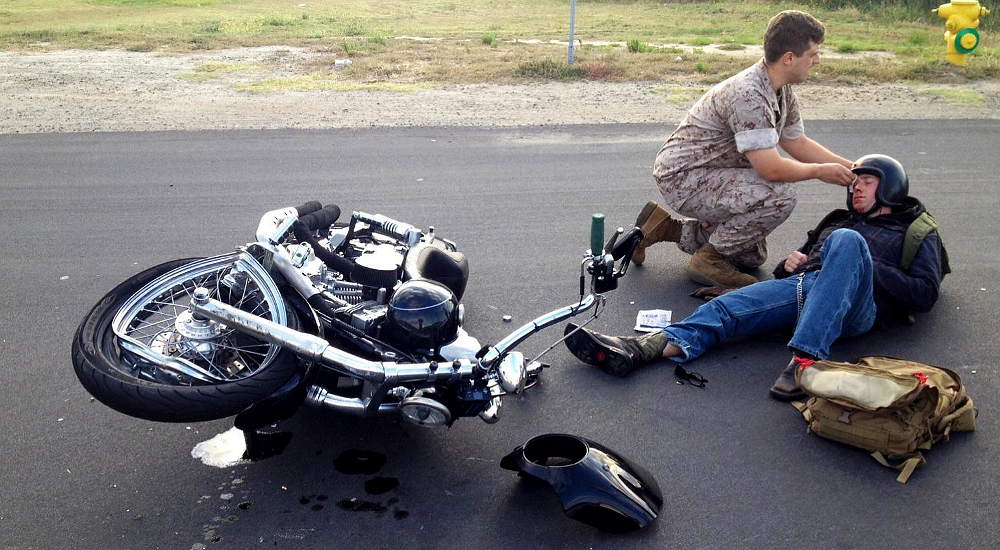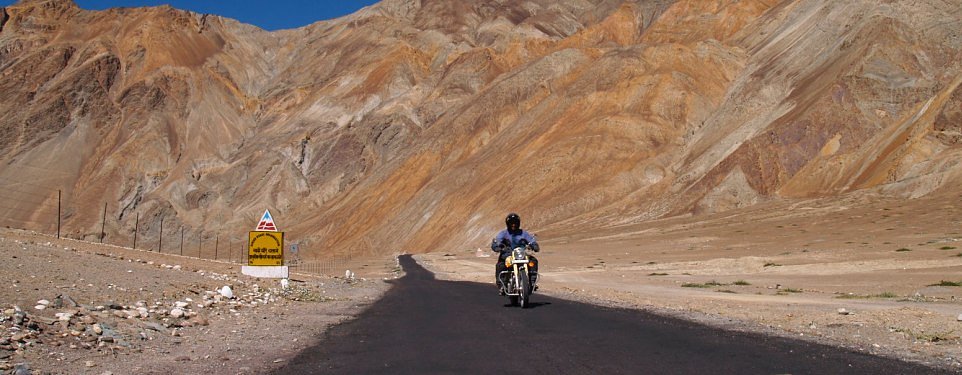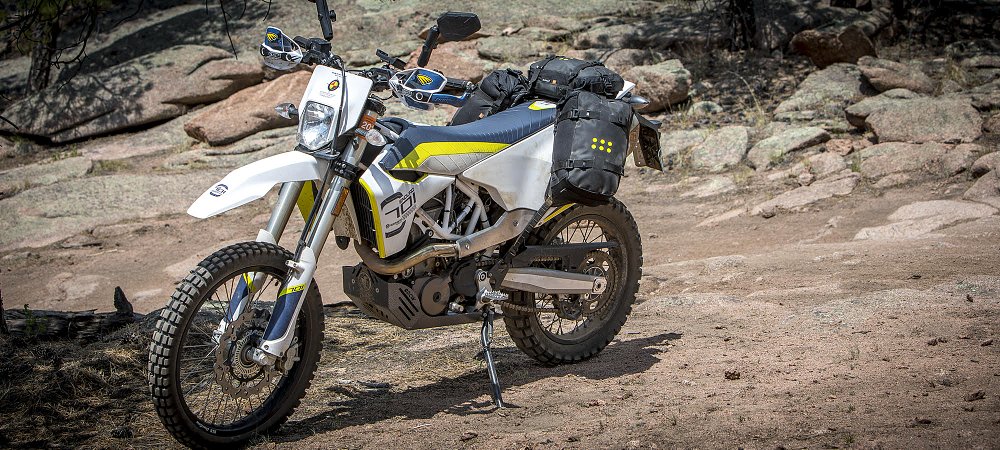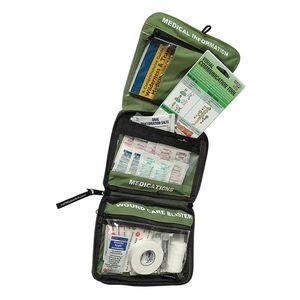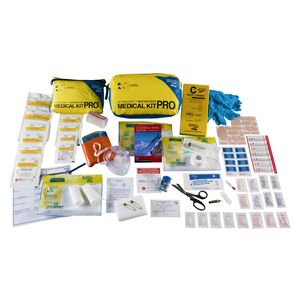It’s your worst nightmare. Your riding buddy has just gone down hard, and you are the first to show up by their side. Now what do you do?
I have replayed this scenario multiple times in my head, and each time I have that pit in my stomach. Truthfully, I had no idea what I would do. That is until now.
Babes in the Dirt and the Kurt Caselli Foundation teamed up to put on a “Riders 1st Responders First Aid/CPR Certification” class with the goal to educate riders with the skills and know-how to address an emergency situation on the road or trail. I signed up right away as soon as the event invite hit my inbox. Finally, I was going to have some control over the situation and my worst fears while riding on the trail. Or was I? As it turns out, receiving an education is only the first step for emergency preparedness.
The goal of this article is not to prepare you to handle emergencies. You’ll have to take the training yourself to accomplish that. The purpose here is to give you an idea of what to expect if you do take the training and to encourage you to think about how you would handle a dangerous situation before it takes you by surprise.
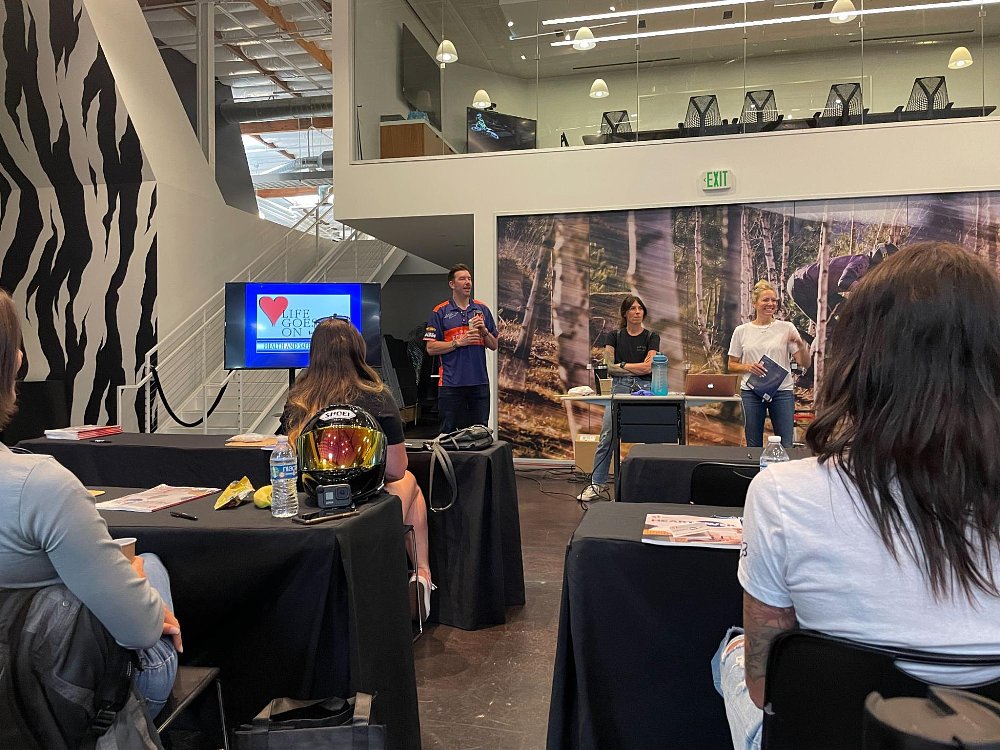
First Responder Basics
The six-hour Riders 1st Responders First Aid/CPR Certification class was split into two three-hour blocks — the first half dedicated to first aid training, and the second half dedicated to CPR/AED training.
Using an American Heart Association approved curriculum, our instructor Erica walked us through all of the basics of first aid response to an emergency situation. It is important to know and respect the legal implications of being a first responder, to make sure you gain consent (or understanding "implied consent") of a fallen rider before administering aid and to always stay within the scope of your training as a first responder.
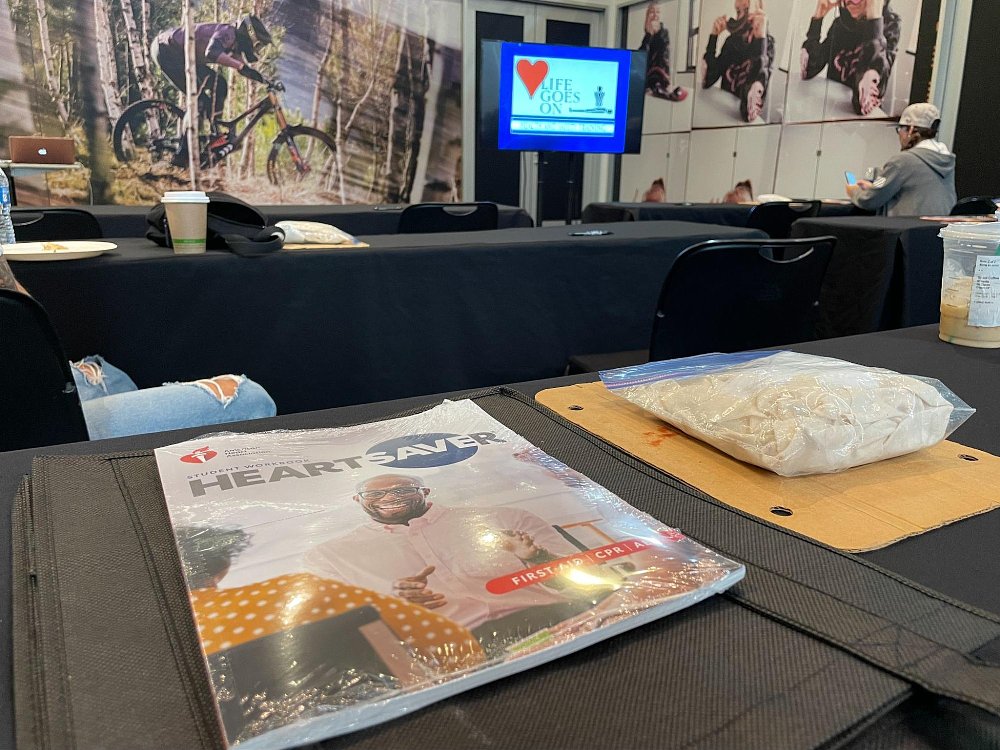
One of the most important lessons learned was about assessing a situation and making a plan of action. So many times I have visualized in my head what it would be like approaching a downed rider, but not having a clue on what to do next. I now have a plan for determining if a scene is safe, determining if a rider is responsive or unresponsive, whether to call 911, and how to conduct a full body assessment and then administer appropriate aid.
For injury emergencies that riders are likely to come across, the acronym “ABS” is an important one to remember. The “ABS” acronym sums up three life-threatening situations that must always be addressed first and foremost.
“ABS” stands for:
- Airway — Always establish that your downed rider is breathing properly. If no breath is detected or if the breathing is irregular, be prepared to perform CPR and prioritize resuscitation. In this class we learned the techniques of hands-only CPR, mouth-to-mouth CPR, and AED assisted CPR.
- Bleeding — The next priority after airway is stopping or slowing bleeding. In this class we learned many techniques to assess the severity of a bleeding injury, how to slow or stop bleeding, and how to dress a wound until help arrives.
- Shock — The final high priority life-threatening situation is the threat of the body going into shock. Shock happens when the body’s tissues and organs are not getting enough blood. This can result from a severe injury, heart attack, severe allergic reactions, and other causes. In this class, we learned the symptoms of shock and how to treat it until help arrives.
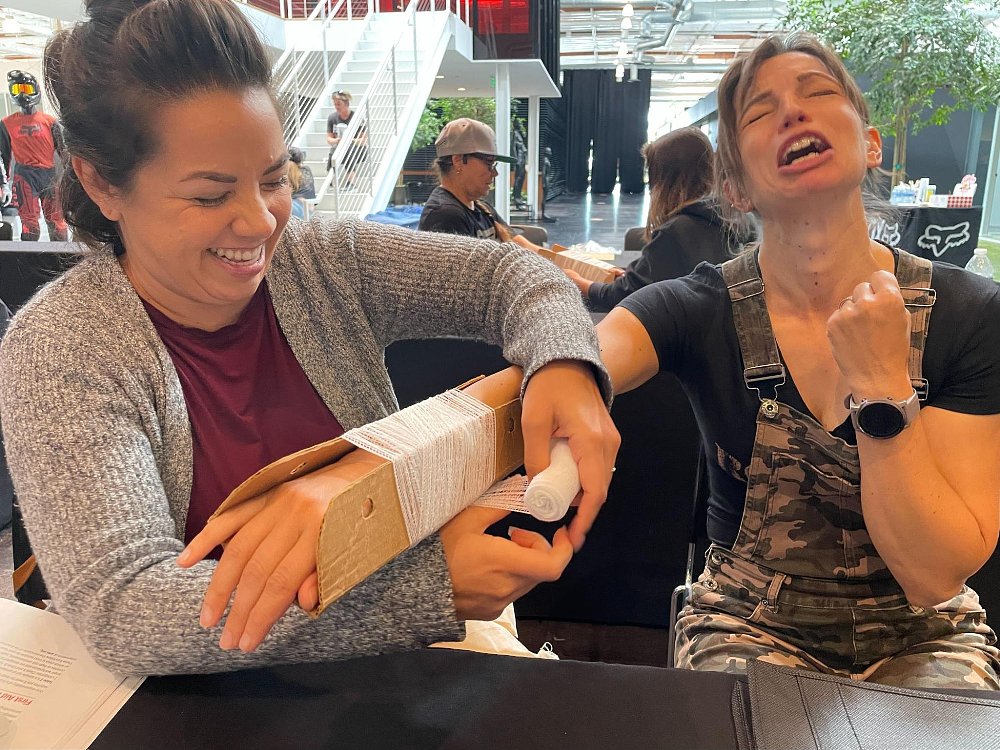
Beyond “ABS”, we walked through an encyclopedia of emergency situations such as concussions, internal bleeding, amputation, seizures, head and neck injury, broken bones, burns, heat stroke, allergic reactions, poisonous bites, and more. So many of these situations were relatable, if only theoretically, and some riders in the class had witnessed a similar situation play out on one of their rides. Erica was very helpful in listening to our imagined or real riding scenarios and offering suggestions on how to address the situation.
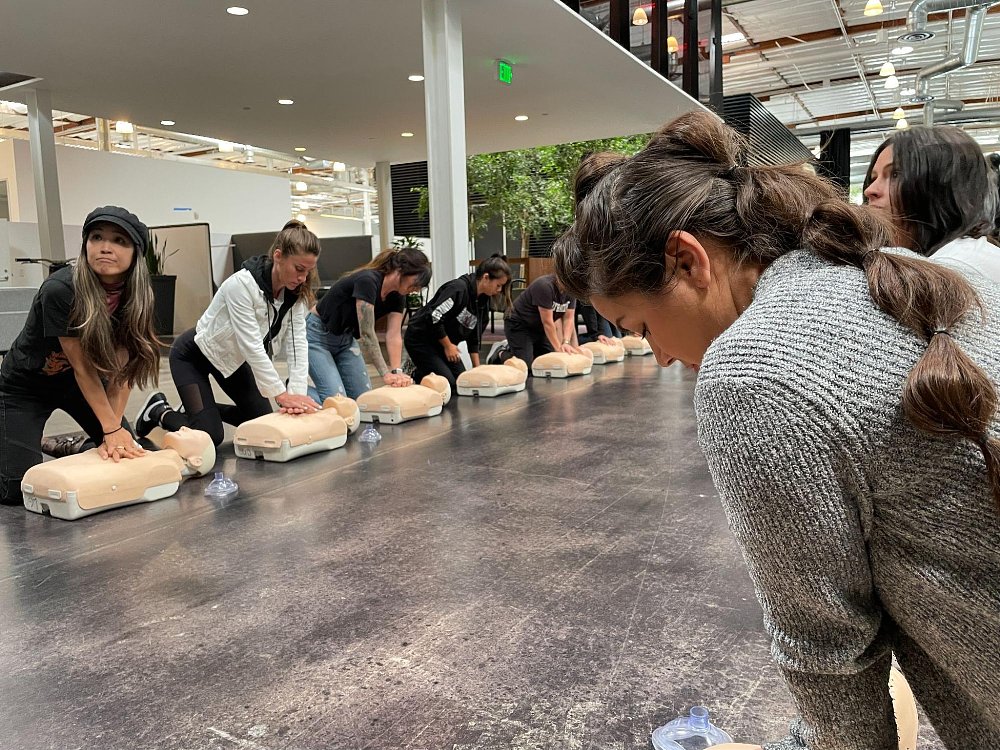
After a jovial lunch of sharing riding stories and catching up with old friends, we dove into the second portion of our training: CPR (cardiopulmonary resuscitation) and AED (automated external defibrillator) procedures.
CPR can truly be a life-saving maneuver, and everyone should learn the basics of it. In our class, the acronym “CAB” helped sum up the steps of CPR.
“CAB” stands for:
- Chest compressions — to be administered in rapid 30-second intervals. We learned how to count the compressions and the appropriate technique to apply the compressions in this class.
- Airway — for CPR to be effective, the airway of the injured rider must be clear. We learned the appropriate head tilt and verifying if the airway is clear.
- Breaths — If administering mouth-to-mouth CPR, the AHA recommends two breaths in between chest compressions to deliver oxygen to the downed rider.
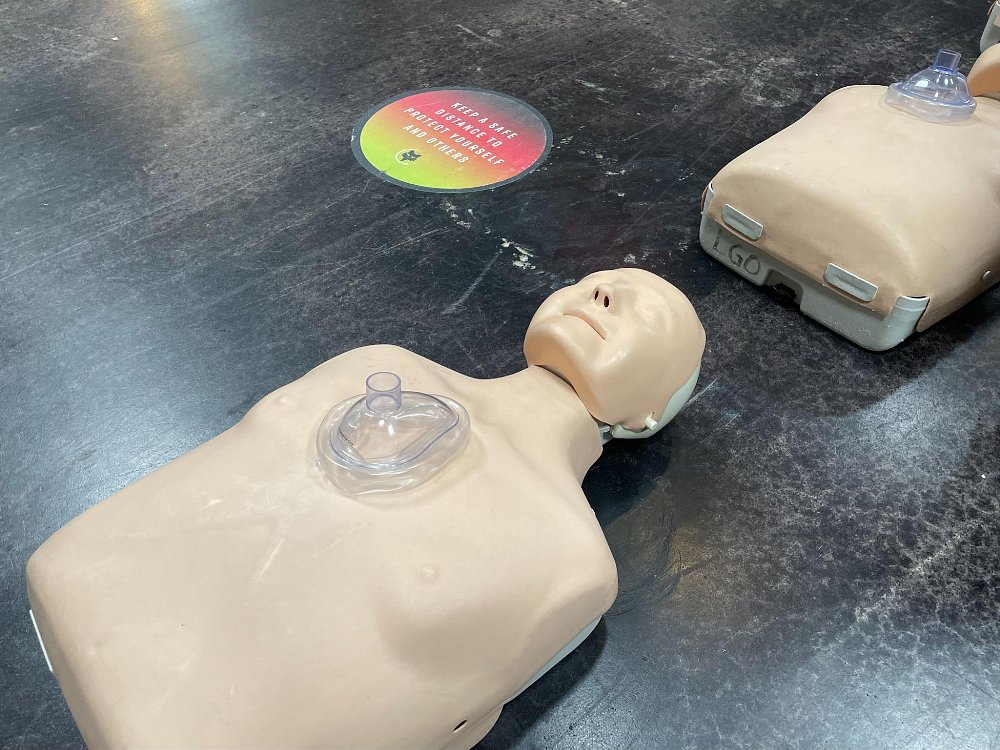
I have never had the chance before to use an AED and so learning how this device operates firsthand was something I was looking forward to. The AED was surprisingly easy to use, with detailed instructions printed on each component and an audio communicator to walk me through each step of the process. AED devices can often be found in major commercial buildings, so if you are addressing an emergency situation in a populated area you can send someone to find one in a nearby shopping plaza, school, commercial building, etc. For those of you riding out on the trail, the AED would be difficult to carry, as it takes up quite a bit of room, and they aren’t exactly cheap, either (starting around $1,500).
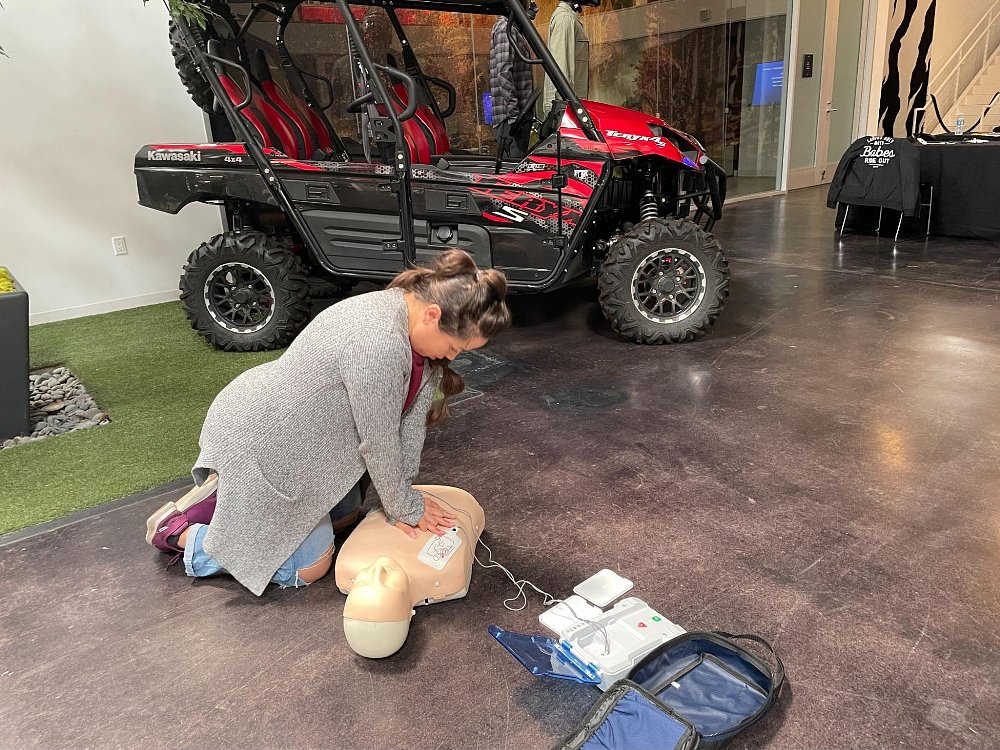
Calling for help
The role of a first responder is to identify the emergency, call 911 for help, and provide care to the best of their abilities until professional help arrives. All well and good for any accidents that happen in a populated vicinity, but what about in those far-flung places I often love to ride? Such as curvy mountain passes on the street bike, or very remote single-track on the off-road bike, both of which often have no cell phone service. Do you leave an injured rider to find cell service to call for help? You are supposed to stay on the line with 911 dispatchers during the call, but what if you need to leave cell service to get back to your injured rider? How will paramedics know how to find you once you hang up? Unfortunately, a lot of these personal queries of mine were beyond the curriculum laid out by the AHA, but Erica and the entire class of riders were happy to discuss these theoretical situations and I began formulating some best practices in my mind.
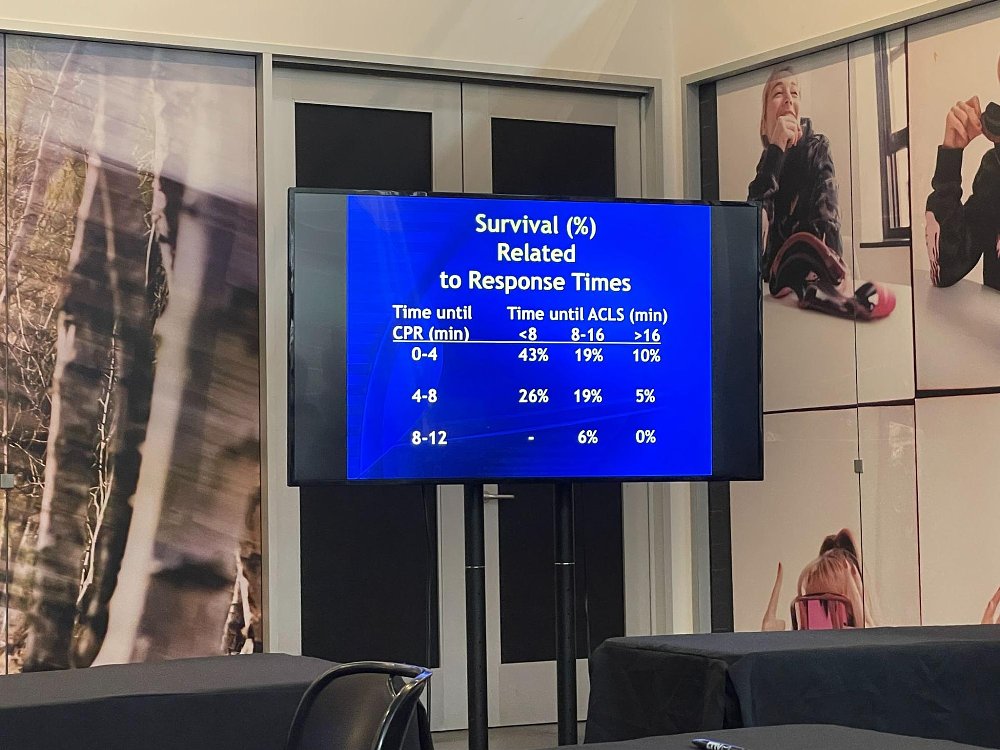
I may have the education to assess and treat an emergency situation as a first responder now, but being prepared to call for paramedics and get them to the scene as quickly as possible will need constant thought and evaluation, depending on the who, what, and where of each ride. Making mental notes of where I have cell service on stops during the ride, knowing what materials I would use to direct emergency responders to the scene, and reevaluating my current first aid kit and emergency supplies are all top of mind now. While the six hours of education and training were well worth the effort, the bonus I had not counted on was the change in my attitude toward preparedness for an emergency on the ride.
Knowledge is power
I left the Babes in the Dirt and Kurt Caselli Foundation “Riders 1st Responders First Aid/CPR Certification” class with an AHA Heart Savers certification in first aid and CPR and the confidence knowing I can assess an emergency situation and administer first aid until help arrives. Beyond that, I now also know that a plan of action for an emergency response on every ride is just as crucial and could also one day save someone’s life.
If you would like to explore your options for a first aid and CPR training, learn more at The Kurt Caselli Foundation or The American Heart Association.











